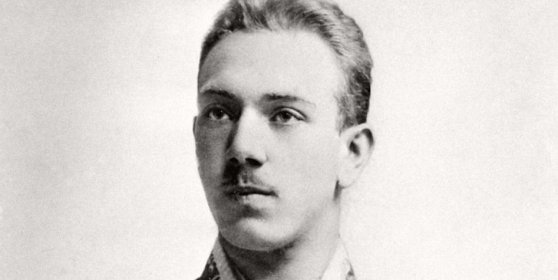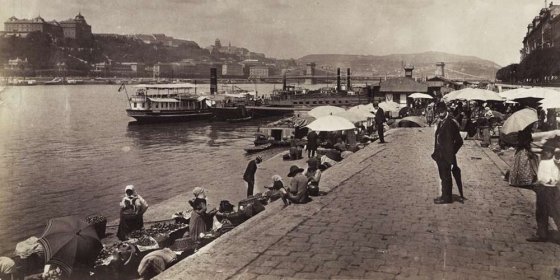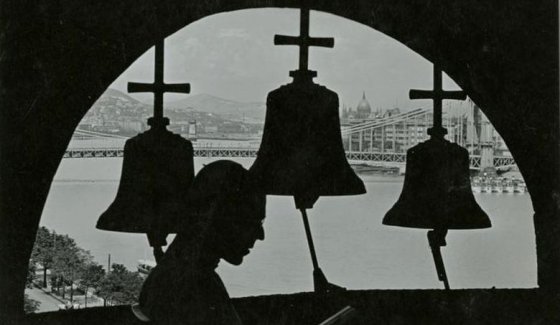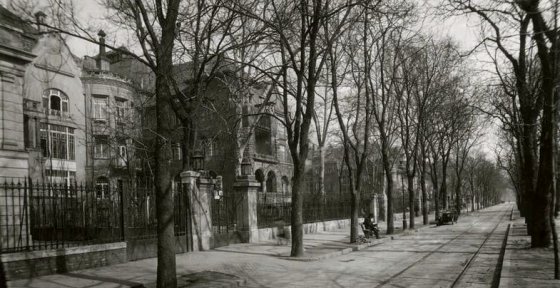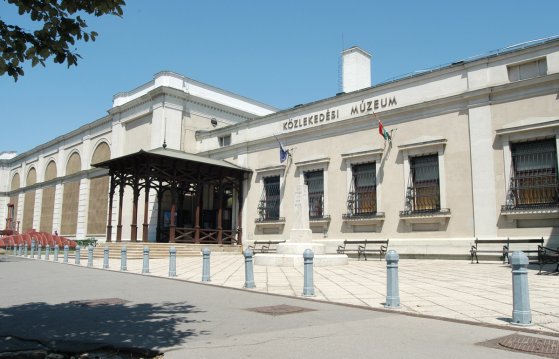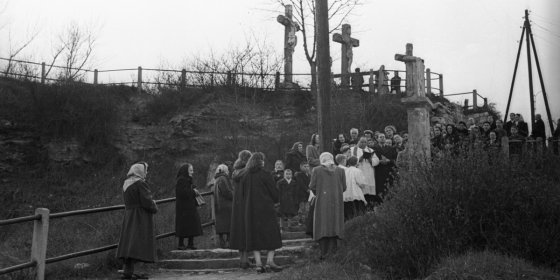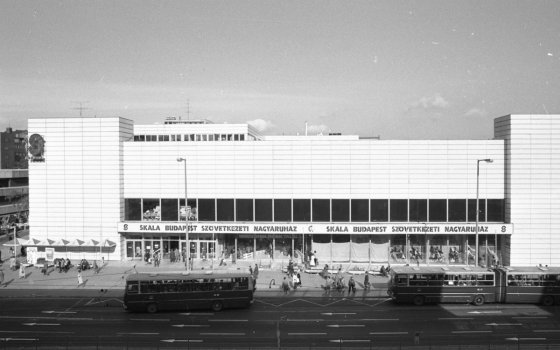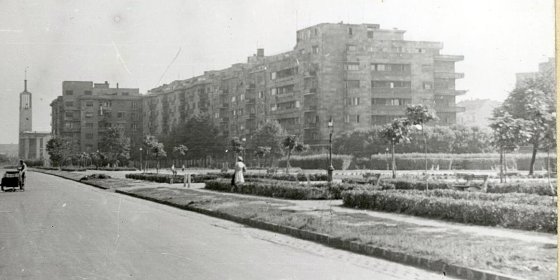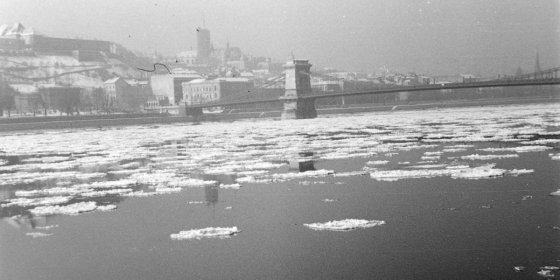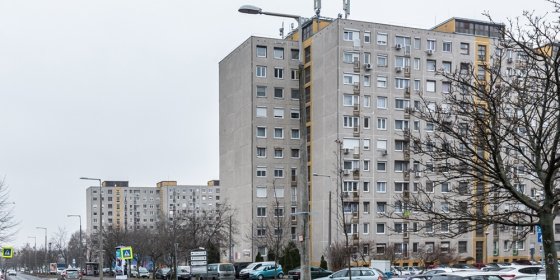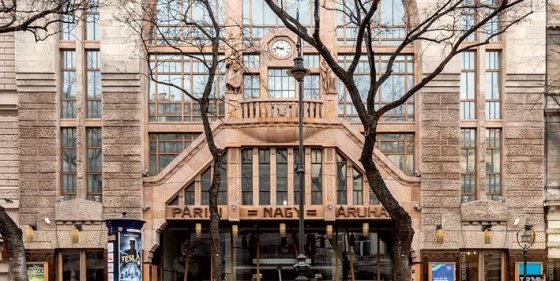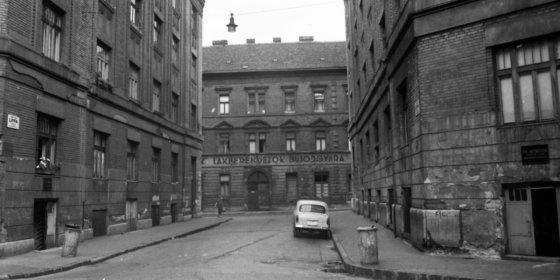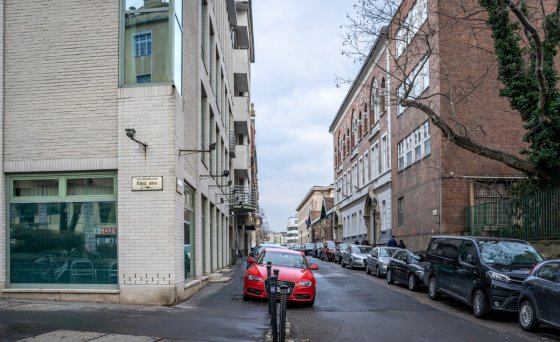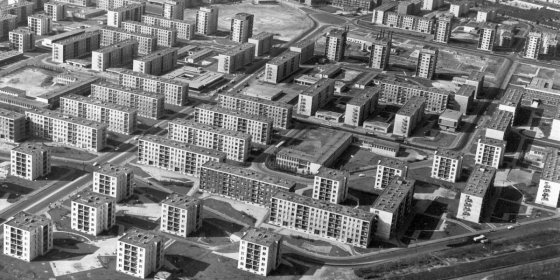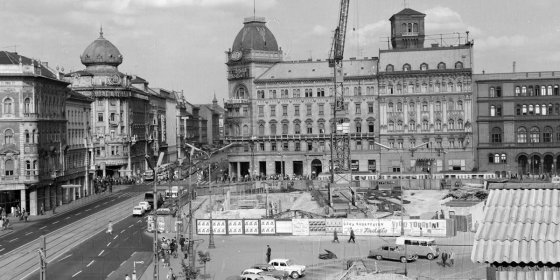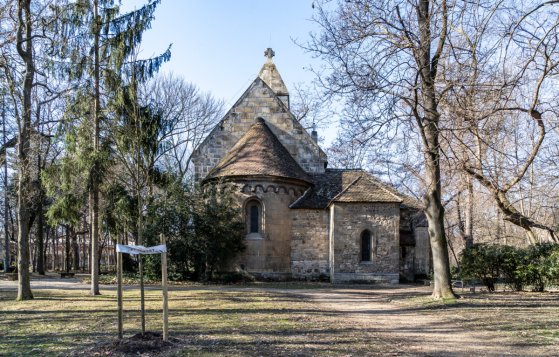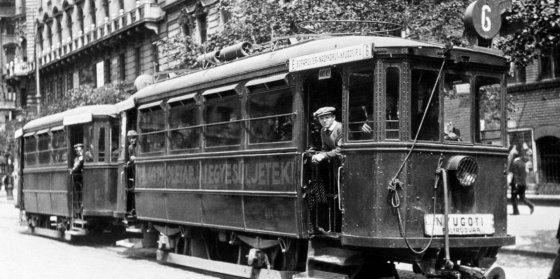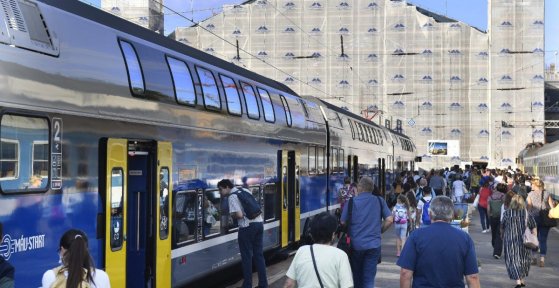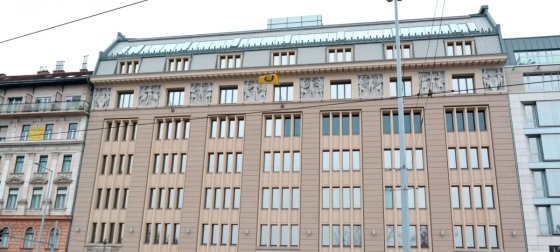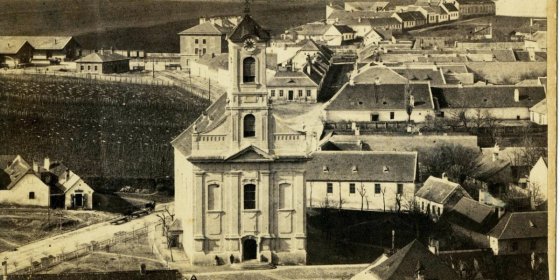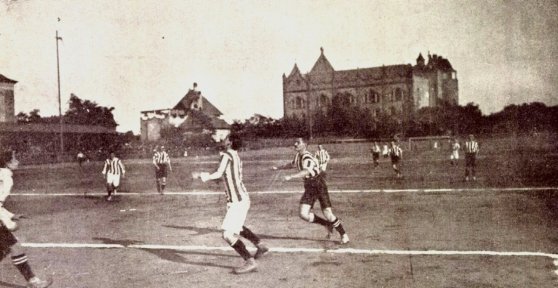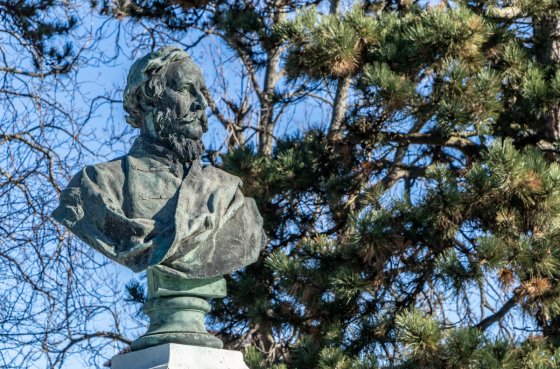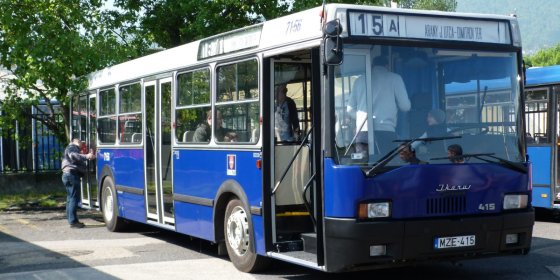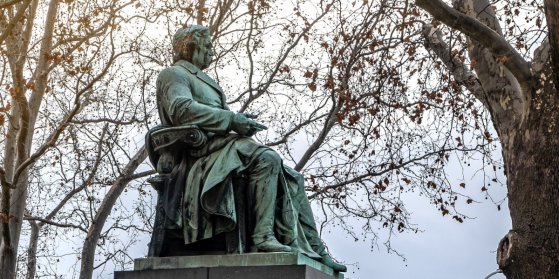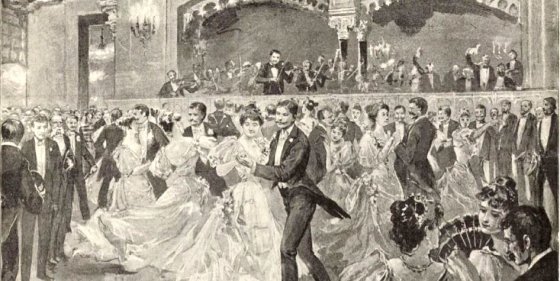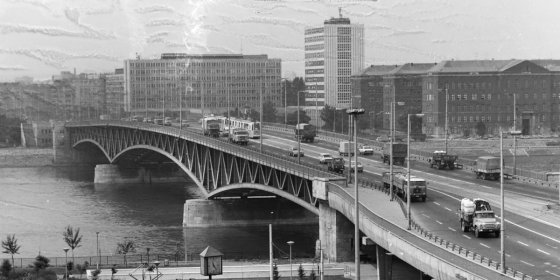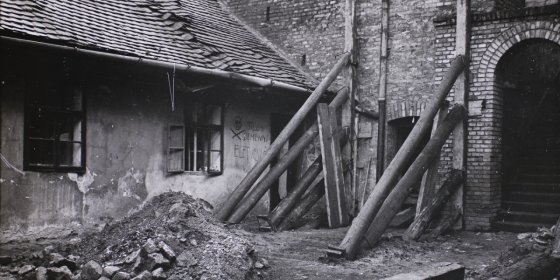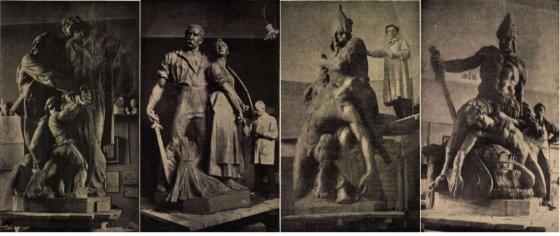 The „intertwined history” of the bridges and the city of Budapest
Which ideas and events have shaped the fate of bridges of Budapest and the cityscape? Alongside many other interesting facts, this question is also answered this newly published book by the Budapest City Archives, which introduces the history of bridges in Budapest.
The „intertwined history” of the bridges and the city of Budapest
Which ideas and events have shaped the fate of bridges of Budapest and the cityscape? Alongside many other interesting facts, this question is also answered this newly published book by the Budapest City Archives, which introduces the history of bridges in Budapest.
histories
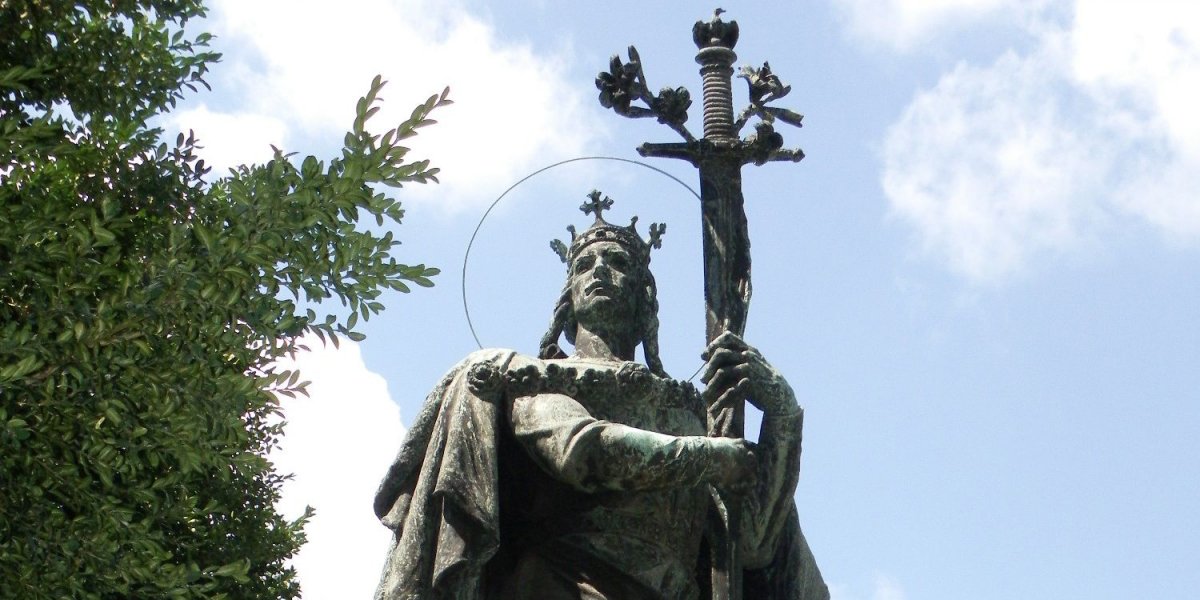 The cult of Saint Emeric of Hungary – The 18th District stands in memory of the Prince
The cult of Saint Emeric of Hungary – The 18th District stands in memory of the Prince
April 14, 2021 at 10:30 AM
Hungary celebrated the life of Saint Emeric, the son of the country's first King, Saint Stephen, 90 years ago. On the 900th anniversary of the death of Prince Emeric (Imre), who was consecrated together with his father in 1083, a large-scale memorial year was organized in 1930–1931 and the village of Pestszentimre was named after him, which in 1950 became part of the 18th District of Budapest. The church in the district also bears the name of the prince, and the first public statue of the district also depicts Saint Emeric.
Alfréd Hajós, Hungary's first Olympic champion, learned to swim on the Danube section in front of the Parliament
April 13, 2021 at 9:00 AM
As an outstanding talent, Alfréd Hajós created something unique in many sports and his chosen profession, architecture. He won the first Olympic champion title for Hungary when 125 years ago; in addition to the 100-meter sprint, he also won the 1,200-meter race in the sea-swimming competition held on 11 April 1896, near Athens. As an architect, he designed, among others, the National Sports Swimming Pool on Margit Island and the synod headquarters of the Reformed Church in Zugló.
The longest monuments in Budapest: the history of the embankments
April 12, 2021 at 9:30 AM
Until the middle of the 19th century, anyone could walk down to the undeveloped, muddy banks of the Danube, but during a flood, nothing stood in the way of the water. The 12-kilometre-long embankments along Budapest's Danube Banks have become an essential part of the cityscape and protect the capital from floods. In connection with the freshly announced reconstruction of the Pest embankment, Pestbuda presents the history of these magnificent structures.
Popes in Budapest – Several leaders of the Catholic Church visited the Hungarian capital before being elected
April 8, 2021 at 10:00 AM
The recent announcement that Pope Francis would visit Budapest in the autumn of 2021 for the closing Mass of the International Eucharistic Congress came as a true surprise to many. The last time a similar event took place was exactly thirty years ago, in 1991, when Pope John Paul II visited the Hungarian capital. Four other leaders of the Catholic Church came to Budapest, even before they were elected the Bishop of Rome. But what have former popes seen of our capital? In 1891 Pope Pius XI saw a tram for the first time in Budapest in 1891. John XXIII visited in 1930 for the St. Emeric Memorial Year, while Pius XII and John Paul VI attended the 1938 Eucharistic Congress. Although none of them visited as popes, it meant a lot to them and the Hungarians that they visited Budapest.
Dutch memories fill Budapest
April 6, 2021 at 9:00 AM
Városliget Avenue is more than two hundred years old. The elegant road lined with villas and public buildings became the home of the elite of Pest in the last third of the 19th century. Several successful people had a house or holiday home built there, and many celebrities treated themselves in the sanatoriums located in the area. Városliget Alley has become a well-known name, yet, 100 years ago, in 1921, it was renamed Vilma Királynő Road after Queen Wilhelmina. The cause: a strange tale for which Budapest wanted to express its thanks to the Dutch.
Museum of Transport opened 55 years ago after post World War II repairs
April 5, 2021 at 1:00 PM
After a more than a two-decades-long forced break, the Museum of Transport opened in City Park on 2 April 1966. During World War II, in 1944, several bombs hit the building. Although the most valuable works of art were saved, the destruction was still immeasurable: in addition to the building, the bombing also caused significant damage to the collection.
One of the oldest ways of the cross in Budapest – The Kiscell Calvary is over 200 years old
April 3, 2021 at 11:00 AM
During the Easter period, people used to visit many calvaries, i.e. Ways of The Cross, in Buda and Pest. One of the oldest calvaries in the city, built 200 years ago and starting next to the Kiscelli Museum, is still one of the most visited Ways of The Cross in Budapest today. Even in 1956, the year of the revolution plenty of people walked the Way, as can be seen in a photo from 65 years ago.
The first modern shopping centre in Budapest – The Skála store in Buda opened 45 years ago
April 2, 2021 at 9:00 AM
There was a store in Buda that brought new colour and new quality to the slow socialist state store system. The modern design, the huge floor space of more than 22,000 square metres, and the relative abundance of goods contributed to the rapid rise in the popularity of the Skála store, which opened 45 years ago on 2 April 1976.
Szent István Park turns 85 – A parquet factory once sprawled across the greens
April 1, 2021 at 9:00 AM
The green that opened on 1 April 1936 was originally called Lipótváros Park, then Rakovszky Park. It was given its current name in 1937 and has been called Szent István Park ever since. The site of the beautiful ornamental garden was once a parquet factory, and its construction was initiated in the 1920s by the President of the Public Works Council at the time, Iván Rakovszky. Újlipótváros' most popular park is 85 years old.
A blast saved Budapest from icy floods 65 years ago
March 16, 2021 at 10:00 AM
The sad year of 1956 brought other disasters than the brutal defeat of the revolution. Pestbuda has already reported on the earthquake in January, but another disaster struck the country in March. A huge flood wreaked havoc south of Budapest, and special measures were needed to protect the capital. Ice blocks were blown up near Kossuth Bridge.
Construction of Gazdagrét confirmed 40 years ago
March 10, 2021 at 9:00 AM
Gazdagrét is unique among the housing estates in Budapest. Located in the Buda hills, the area has clear borders and remains a popular place to live today. A popular soap opera followed its life for years.
Paris Department Store on Andrássy Avenue opened 110 years ago
March 3, 2021 at 11:00 AM
The Paris Department Store at 39 Andrássy Avenue opened to the public 110 years ago, on 3 March 1911, after its previous building at 38 Rákóczi Road burned down, and the store moved to its new location. However, the new building of the Paris Department Store was larger and more luxurious than its predecessor. It was opened to shoppers until the end of World War II.
Fifty years ago, humans weren’t the most numerous inhabitants of Budapest
February 26, 2021 at 9:00 AM
Rats are one of the most unpopular animals. However, they are also dangerous as they spread countless diseases. In the past, every big city was teeming with these rodents, and even today, only a few can say they are almost rat-free. Budapest is one of them.
A street in Buda and a mountain in Australia – Who was Tadeusz Kościuszko?
February 23, 2021 at 11:30 AM
Kosciuszko Tádé Street in the 1st District is generally well-known. However, few people know who the person behind the name was and why the street known as Koronaőr Street before 1948 was renamed in his honour. However, the hero of Polish independence, Tadeusz Kościuszko, born 275 years ago, was so well known in his day that in addition to a street in Buda, the highest mountain in Australia was named after him, and his statue was even erected in Washington.
A wise, diplomatic and friendly leader – Károly Ráth the first Lord Mayor of Budapest.
February 22, 2021 at 10:00 AM
Károly Ráth became the first Lord Mayor of the united Budapest in 1873. Although the Lord Mayor was already 52 years old when he took his post, many said he gave his whole life to serving Budapest. Educated as a lawyer, the mayor was extremely popular. He held his position for 24 years and was re-elected at every election he ran in until his death. Despite this, no public space in Budapest bears his name, nor does a statue stand to honour his memory.
The first panel building in Budapest was completed sixty years ago – A new era began next to Üllői Road
February 18, 2021 at 11:30 AM
In Hungary, a housing shortage defined the 1950s. Due to forced industrialization, thousands moved to the cities, chiefly Budapest and the newly created idealistic cities. However, there was not enough vacant housing in these cities. The communist government believed industrialised house construction to be the solution. As a result, the first panel building in Budapest was completed on the József Attila Housing Estate sixty years ago.
A blast connected the two tunnels – Tunnels of M2 metro completed 60 years ago
February 16, 2021 at 9:00 AM
Building a metro was no easy feat in 1960s Budapest. During the construction of the M2 line, workers battled liquefied sand and groundwater but also found interesting artefacts, such as the skeleton of a Rhinoceros and a mammoth tooth. The large-scale development project also demanded some sacrifices. The building of the National Theatre was destroyed, and Rókus Hospital almost collapsed – though the latter was eventually saved. The tunnels were built from two different directions. The section built from Keleti Railway Station was connected to another built from Blaha Lujza Square with explosives sixty years ago.
The oldest bell in Budapest – A Chapel on Margit Island preserves the memory of the Premonstratensians
February 14, 2021 at 11:00 AM
The Order of Canons Regular of Prémontré is celebrating its 900th anniversary this year. Traditional holds that the French order appeared in Hungary shortly after its founding during King Stephen II's rule between 1116 and 1131. The white canons remain active in Hungary to the present day. Yet in Budapest, a chapel they have not used in centuries is the most well-known building connected to them. Saint Michael's Chapel in the northern part of Margit Island was rebuilt from ruins by a central figure of Hungarian conservationism, Kálmán Lux, in the early 1930s.
Where the No. 6 stops – The trams of Budapest have been numbered for 111 years
February 12, 2021 at 11:00 AM
For the modern commuter, the fact that trams and buses have numbers is obvious – but this was not always the case. In fact, numbers first appeared on trams in Budapest in 1910. Even the system's introduction had its bumps as trams often turned in different directions than what their number would have suggested, meaning not only passengers but drivers and conductors had to get used to the new solution.
City of the Future – Railway development connects new areas to city centre
February 8, 2021 at 11:00 AM
What will Budapest look like in 20 years? According to current urban development efforts, the air will be much cleaner, the underground, suburban railways and rail services will be connected. Commuters will happily board clean, on-time and frequent trains to get to work from the outer parts of Budapest and towns in the agglomeration. Sixteen new railway stations will be built to support this purpose, while huge areas once used by the railway may be rehabilitated and handed over for residential use. At least this is what the newly completed Budapest Agglomeration Railway Strategy says.
Art Deco on Boráros Square – Former headquarters of the Hangya Cooperatives turns 100
February 6, 2021 at 11:00 AM
In 1920 a new chapter began in the life of the Hangya Cooperative, which once had shops all over the country. The company decided to celebrate the upcoming 25th anniversary of its creation by building a new headquarters. The art deco-style building designed by Dénes Györgyi was completed quickly at present-day 30 Közraktár Street. The proud palace has stood for one hundred years on the three plots, highlighting the former success of the Hangya Cooperative.
Cut in half and expanded – The not so everyday history of a Church
February 4, 2021 at 8:30 AM
There is an almost average 18th-century church, the history of which is much more exciting than its simple yellow walls would suggest. It was once cut in two and expanded – and it also served as the venue of a famous wedding 185 years ago. The happy couple were not everyday people. The bride was the widow of Károly Zichy, and the groom was István Széchenyi.
We need a team! - First professional football match in Hungary played 120 years ago
February 3, 2021 at 11:00 AM
Football spread from England to Hungary in the 1890s. The Hungarian Football Association was founded 120 years ago in 1901, and in the same year, the first Hungarian football championship began. Budapest Torna Club (BTC – 'Budapest Gymnastics Club') became the first winning team, with the Olympic champion architect, Alfréd Hajós in its ranks. The BTC remained the dominant team in the league for a few years and was soon succeeded by MTK and FTC.
The man who introduced compulsory education – 150-year anniversary on József Eötvös's death
February 2, 2021 at 2:00 PM
His statue stands on the Kossuth Monument next to the Parliament among the greatest figures of the Reform Period. His bronze statue rises proudly above a square that bears his name in the Budapest city centre. A respected secondary school was named in his honour, and the house named after his novel The Carthusian still stands on Svábhegy. He was also the politician to introduce compulsory education. The writer, politician and statesman, József Eötvös died 150 years ago. A leading figure of the Reform Period and subsequent decades, his policies are as much part of his oeuvre as his novels. Visit the sites that memorialise the nobleman in Budapest.
Another Icarus retires – The 415 family never became popular in Budapest
February 1, 2021 at 9:00 AM
Budapest has just bidden farewell to another bus type: the last Ikarus 415 was recently retired from service. The model appeared in Budapest in 1987 but never became dominant, even though the factory had planned to replace the classic 200 series with the new design. Rather, its role was similar to a substitute player: rarely allowed to shine.
The Wise Man of the Nation – Deák Ferenc died 145 years ago
January 31, 2021 at 5:00 PM
He played a prominent role in reaching the Austro-Hungarian Compromise of 1867, which created the dualist state known as the Austro-Hungarian Monarchy. The compromise led to stunning development in Hungary. Ferenc Deák, the "Wise Man of the Nation", died on 28 January 1876, 145 years ago. Many memorials throughout Budapest stand in honour of the great statesman.
Filled to the brim – Balls and dances during carnival season in Pest filled the city
January 28, 2021 at 11:00 AM
In today’s world, filled with fears caused by the pandemic, many have forgotten that these weeks are traditionally some of the happiest in the year: Carnival season. The time for masquerade balls and fun, of bidding winter farewell, and turning towards the spring. Sadly entertainment is limited this year, but the stories of the past can console us, as we remember the brass bands playing in City Park, as ball after ball was held throughout Buda and Pest, and a street organ sounded through Óbuda.
Changes planned for the area around Buda bridgehead of Petőfi Bridge
January 26, 2021 at 11:00 AM
Goldmann György Square in the 11th District will be completely transformed. The university is planning to construct new buildings in place of the V2 building and the canteen that have stood empty for years. A zero-emission research centre has been planned for the site. Dive into the history of this unique site with PestBuda!
Landslide in Buda: cracked walls and sunken villas lined Castle Hill
January 21, 2021 at 9:00 AM
In January 1936 the earth began to move in Buda. But it was not an earthquake but a landslide. The western slope of Castle Hill began to slide. Roads sank, houses cracked, many homes had to be abandoned. The hill’s movement lasted for months and was eventually stopped in the Autumn. Several houses were demolished due to the disaster.
Irredentist statues erected on Szabadság Square 100 years ago
January 18, 2021 at 11:00 AM
The group of irredentist sculptures erected in response to the Trianon Peace Treaty was unveiled a hundred years ago, on 16 January 1921. One of the first spectacular responses to the treaty that ended World War I was welcomed by a crowd of 50.000. The sculptors. Zsigmond Kisfaludi Strobl, István Szentgyörgyi, János Pásztor and Ferenc Sidló cast the statues to depict everything that the territories lost only half a year earlier had meant in Hungarian history.
More articles
 The „intertwined history” of the bridges and the city of Budapest
Which ideas and events have shaped the fate of bridges of Budapest and the cityscape? Alongside many other interesting facts, this question is also answered this newly published book by the Budapest City Archives, which introduces the history of bridges in Budapest.
The „intertwined history” of the bridges and the city of Budapest
Which ideas and events have shaped the fate of bridges of Budapest and the cityscape? Alongside many other interesting facts, this question is also answered this newly published book by the Budapest City Archives, which introduces the history of bridges in Budapest.
 The Bridge Report, which brought a turning point in the history of Budapest
A travel report that changed the history of Pest and Buda, as well as Hungary. The little book contributed to the change of half a thousand years of legal customs and the implementation of an investment of unprecedented size and technical quality. This book was The Bridge Report [Hídjelentés in Hungarian].
The Bridge Report, which brought a turning point in the history of Budapest
A travel report that changed the history of Pest and Buda, as well as Hungary. The little book contributed to the change of half a thousand years of legal customs and the implementation of an investment of unprecedented size and technical quality. This book was The Bridge Report [Hídjelentés in Hungarian].
 Drama on the university wall - The heroic monument was planned 95 years ago
In the constant hustle and bustle of the Egyetem Square in Pest, the students may not even notice the monument that decorates the short section of wall between the church and the central building of ELTE. However, it commemorates their predecessors, the heroes who fought for their country in World War I, and those who heroically helped them. The first design of the dramatically collapsing soldier was born in 1928, ninety-five years ago.
Drama on the university wall - The heroic monument was planned 95 years ago
In the constant hustle and bustle of the Egyetem Square in Pest, the students may not even notice the monument that decorates the short section of wall between the church and the central building of ELTE. However, it commemorates their predecessors, the heroes who fought for their country in World War I, and those who heroically helped them. The first design of the dramatically collapsing soldier was born in 1928, ninety-five years ago.

